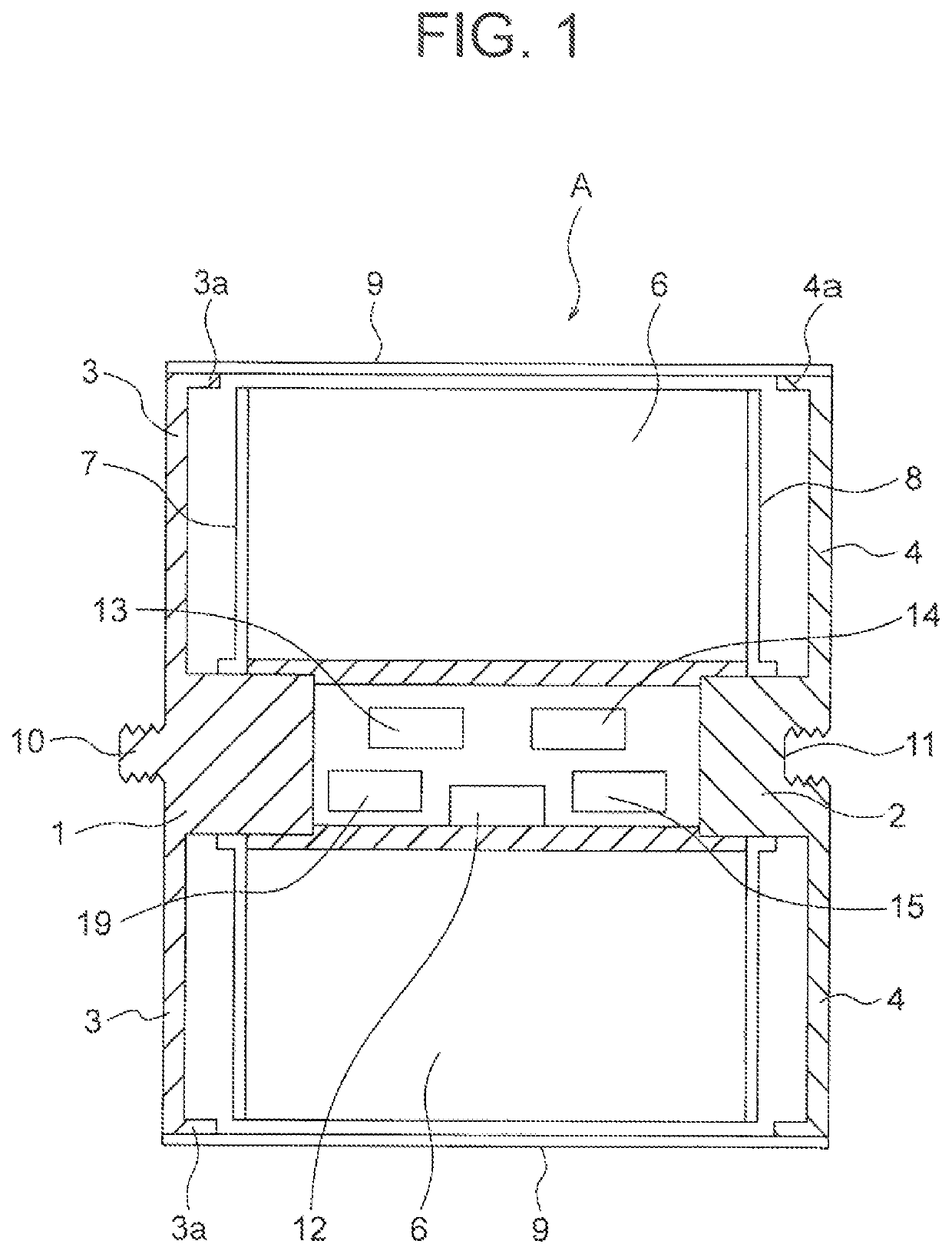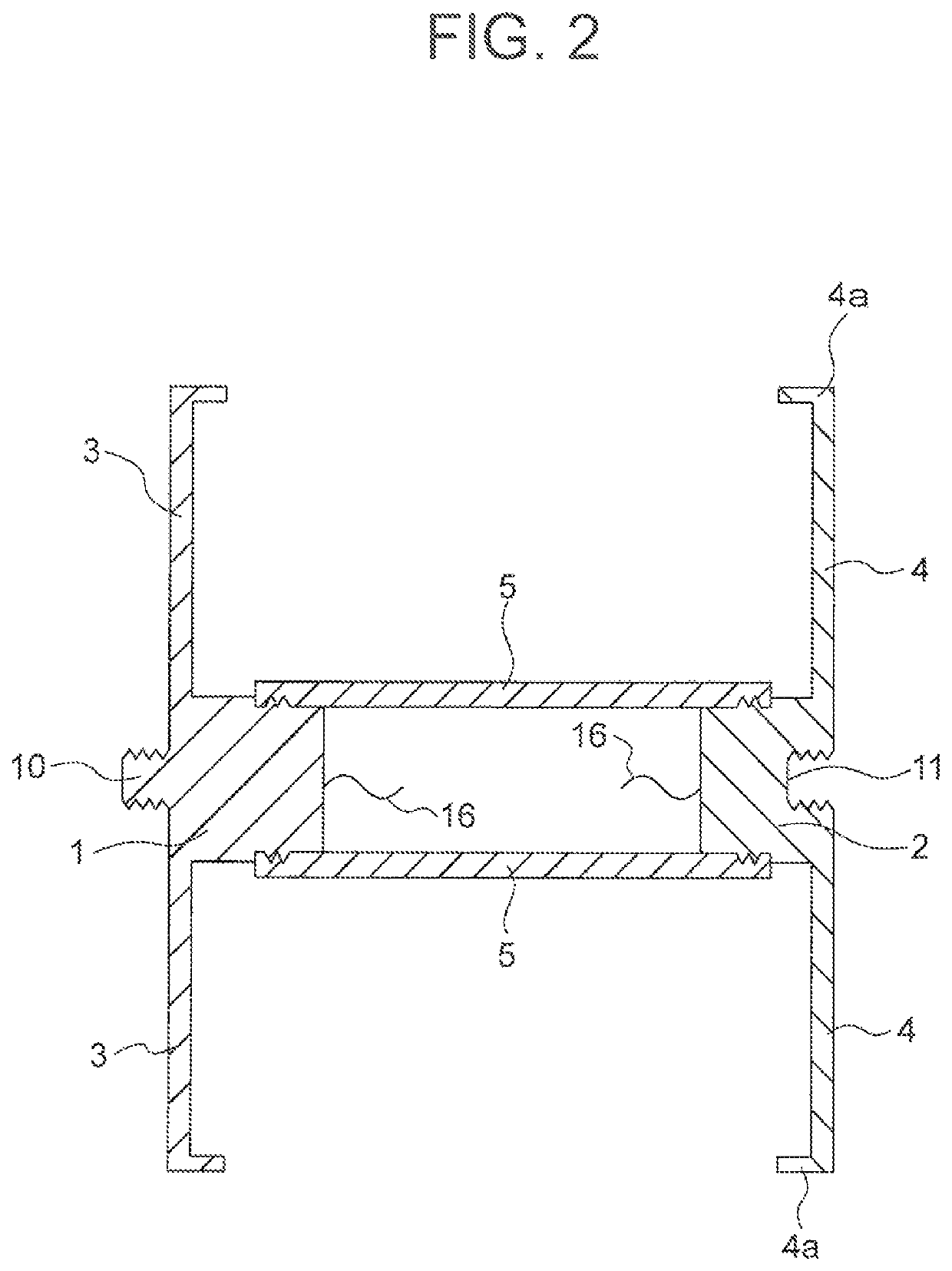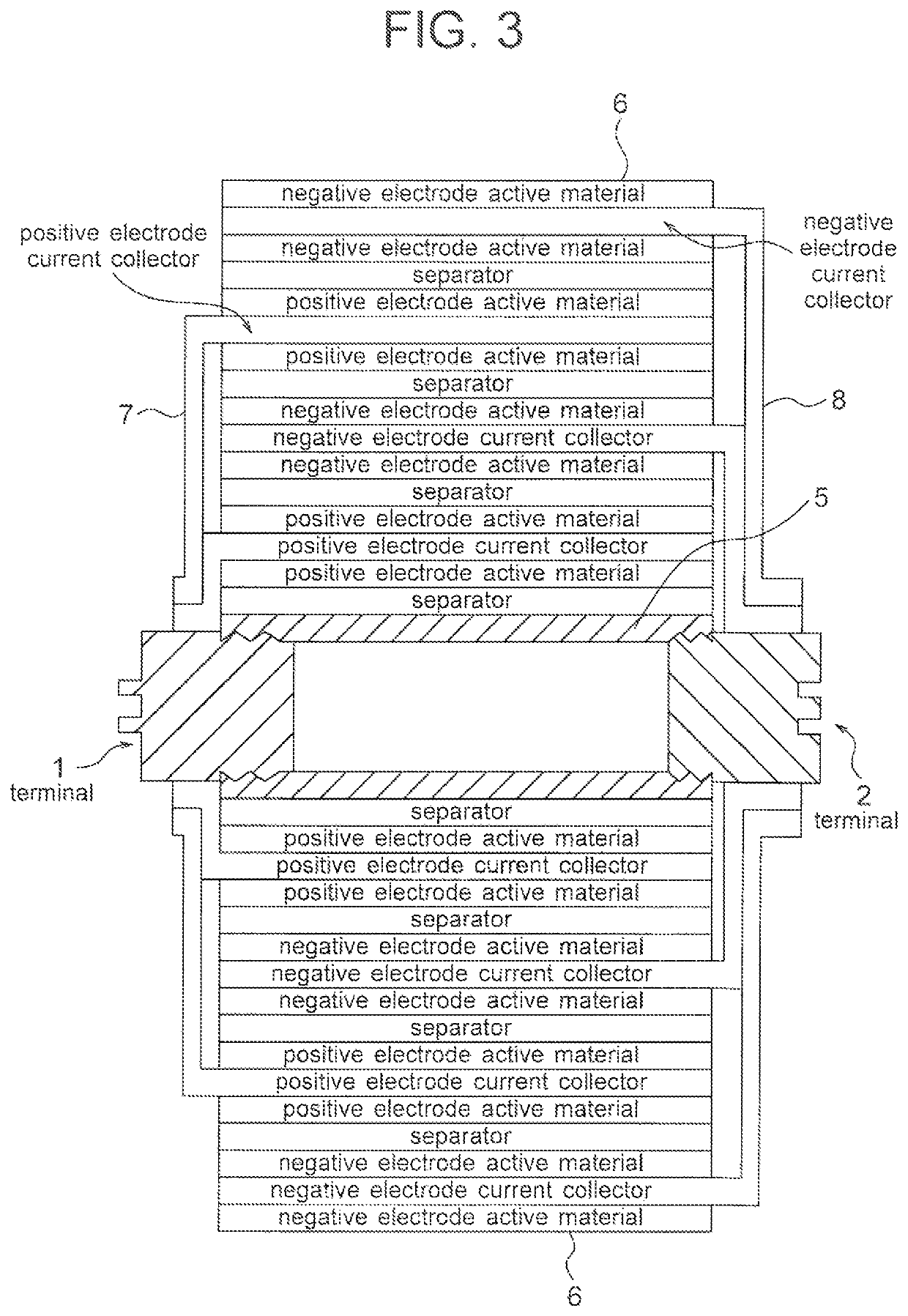Non-aqueous electrolyte secondary battery cell and assembled battery using same
a battery cell and non-aqueous electrolyte technology, applied in the direction of batteries, wound/folded electrode electrodes, sustainable manufacturing/processing, etc., can solve the problems of inability to achieve high energy density, fire, and possibility of overcharging, and achieve accurate measurement of increase in battery temperature and voltage, and even more reliable suppression
- Summary
- Abstract
- Description
- Claims
- Application Information
AI Technical Summary
Benefits of technology
Problems solved by technology
Method used
Image
Examples
exemplary embodiment 1
[0050]A non-aqueous electrolyte secondary battery cell A of this invention will be explained on the basis of FIGS. 1 to 8.
[0051]In the non-aqueous electrolyte secondary battery cell A, two metal plates, each of which has the shape of a quadrangle with rounded corners and is highly electro-conductive, are provided so as to face each other while being spaced apart from each other; central parts of the two metal plates project in swelling fashion and inwardly; a cross section of each of these projections is approximately quadrangular; either one of the projections and the central part of the metal plate, which is contiguous to the projection, serve as either a positive electrode or negative electrode terminal 1 or 2; and portions of the metal plates around the terminals 1 and 2 serve as flanges 3 and 4. The outer circumferential shape of the flanges 3 and 4 is not limited to the shape of a quadrangle with rounded corners and may be circular.
[0052]A hollow core material 5 is formed by:...
exemplary embodiment 2
[0078]Next, exemplary embodiment 2 of this invention will be explained on the basis of FIG. 9.
[0079]In a non-aqueous electrolyte secondary battery cell B according to exemplary embodiment 2, a PTC element 18 is provided on the outer circumference of the projection of the negative electrode terminal 2. The rest of the configuration is equivalent to exemplary embodiment 1. Provision of the PTC element 18 provides the following function. That is, when there is a temperature increase, a resistance value increases so as to break a current flowing through one or more battery cells B, and when heat discharge at the Zener diode 15 exceeds the heat capacity due to overcharge or when there is external short circuiting, the battery cell(s) is (are) prevented from reaching a high temperature.
[0080]It should be noted that in addition to, or in place of, exemplary embodiment 2 above, although this is not illustrated in the figures, in the battery pack in which a plurality of the non-aqueous elect...
PUM
| Property | Measurement | Unit |
|---|---|---|
| thickness | aaaaa | aaaaa |
| thickness | aaaaa | aaaaa |
| thickness | aaaaa | aaaaa |
Abstract
Description
Claims
Application Information
 Login to View More
Login to View More - R&D
- Intellectual Property
- Life Sciences
- Materials
- Tech Scout
- Unparalleled Data Quality
- Higher Quality Content
- 60% Fewer Hallucinations
Browse by: Latest US Patents, China's latest patents, Technical Efficacy Thesaurus, Application Domain, Technology Topic, Popular Technical Reports.
© 2025 PatSnap. All rights reserved.Legal|Privacy policy|Modern Slavery Act Transparency Statement|Sitemap|About US| Contact US: help@patsnap.com



